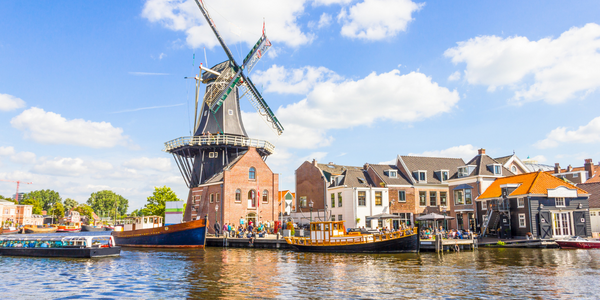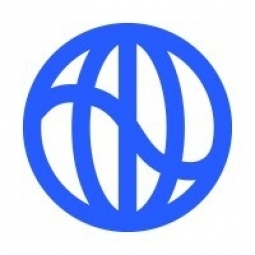Applicable Industries
- Cement
- Cities & Municipalities
Use Cases
- Continuous Emission Monitoring Systems
- Regulatory Compliance Monitoring
About The Customer
Kainos is a leading digital services and platforms company that has been in operation for over three decades. Their mission is to use the latest technology to make the world a better place. They are a trusted partner for public sector organisations like the UK government and the NHS, as well as for brands like Netflix and John Lewis. Kainos's approach is to find the best people, provide them with the resources they need to grow, and then harness their talent to design and build solutions that help clients deliver better digital experiences.
The Challenge
Kainos, a trusted partner for public sector organisations and brands, had initiated a climate action plan driven by employee interest and inquiries from customers and investors. However, they faced several challenges. They lacked visibility into how their carbon footprint was calculated and didn't know which actions would lead to significant reductions quickly. They were also aware that indirect 'Scope 3' emissions from suppliers often accounted for 90% or more of a software company's total emissions, but they didn't know which vendors to focus on. Additionally, they were unsatisfied with merely offsetting emissions and wanted to set an ambitious reduction plan that would keep global temperatures within the +1.5° C safe zone. In 2021, they were asked to provide a full carbon reduction plan with a pathway to net zero emissions in just sixty days, a task that would have been daunting without a clear plan.
The Solution
To address these challenges, Kainos partnered with Watershed, an organization that helps companies reduce their carbon footprints. With Watershed's help, Kainos developed an ambitious net zero plan with a target date of 2025, five years ahead of the gold standard. They began taking significant action on office retrofitting and sourcing clean power, with a goal of using 100% renewables. They also gained new data insights into their carbon emissions, which helped them pass the first screening phase with the Science Based Targets initiative, the strongest validation body in the industry. Kainos also identified the largest sources of carbon in their value chain and developed innovative tools to understand the carbon implications of their digital solutions. They are now working to support their customers in prioritizing their own emission reduction action plans.
Operational Impact
Quantitative Benefit

Case Study missing?
Start adding your own!
Register with your work email and create a new case study profile for your business.
Related Case Studies.

Case Study
Turning A Stadium Into A Smart Building
Honeywell created what it called the “intelligent system” for the National Stadium in Beijing, China, turning the venue for the opening and closing events at the 2008 Summer Olympics into a “smart building.” Designed by highly controversial artist Ai Weiwei, the “Bird’s Nest” remains one of the most impressive feats of stadium architecture in the world. The 250,000 square meter structure housed more than 100,000 athletes and spectators at a time. To accommodate such capacity, China turned to Honeywell’s EBI Integrated Building Management System to create an integrated “intelligent system” for improved building security, safety and energy efficiency.

Case Study
System 800xA at Indian Cement Plants
Chettinad Cement recognized that further efficiencies could be achieved in its cement manufacturing process. It looked to investing in comprehensive operational and control technologies to manage and derive productivity and energy efficiency gains from the assets on Line 2, their second plant in India.
.png)
Case Study
Smart Street Light Network (Copenhagen)
Key stakeholders are taking a comprehensive approach to rethinking smart city innovation. City leaders have collaborated through partnerships involving government, research institutions and solution providers. The Copenhagen Solutions Lab is one of the leading organizations at the forefront of this movement. By bringing together manufacturers with municipal buyers, the Copenhagen Solutions Lab has catalyzed the development and deployment of next-generation smart city innovations. Copenhagen is leveraging this unique approach to accelerate the implementation of smart city solutions. One of the primary focus areas is LED street lighting.

Case Study
Buoy Status Monitoring with LoRa
The Netherlands are well-known for their inland waterways, canals, sluices and of course port activities. The Dutch Ministry of Infrastructure indicates that there are thousands of buoys and fixed items in and near water environments that would profit from IoT monitoring. One of the problems with buoys for example, is that they get hit by ships and the anchor cable breaks. Without connectivity, it takes quite some time to find out that something has happened with that buoy. Not to mention the costs of renting a boat to go to the buoy to fix it. Another important issue, is that there is no real-time monitoring of the buoys at this moment. Only by physically visiting the object on the water, one gains insight in its status.

Case Study
Barcelona Case Study
Barcelona’s heavy traffic and its associated high levels of pollution were the primary factors that motivated some companies and universities to work on strategies for improving traffic in the city centre. Bitcarrier is one of the technologies involved in the In4Mo Project, whose main objective is to develop the applications that form the core of smart mobility, one of the fundamental pillars of the smart city concept.








